The inner levels of matter and energy follow rules and patterns so different from the ones we’re used to that they defy our mental schemes. Over the past few decades, quantum physics has been exploring how these fundamental particles operate everything in the universe. Their influence is hiding inside both the very mundane and the very extraordinary. Quantum physics is behind your morning toast apparently but it is also behind transistors, laser technology, GPS, cryptography, atomic clocks, MRI and many of the technological advances of recent years.
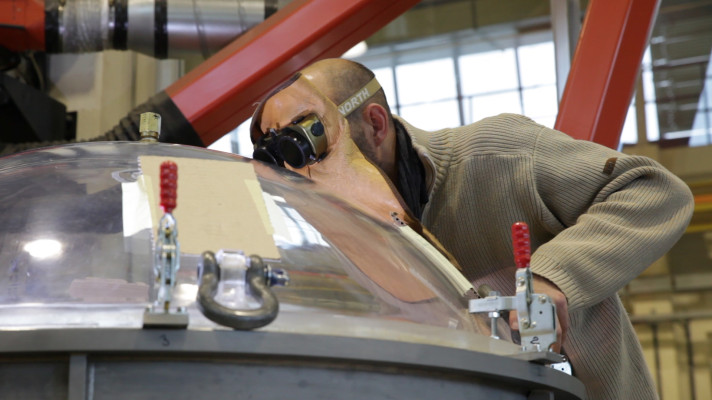
Semiconductor, The View from Nowhere, 2018
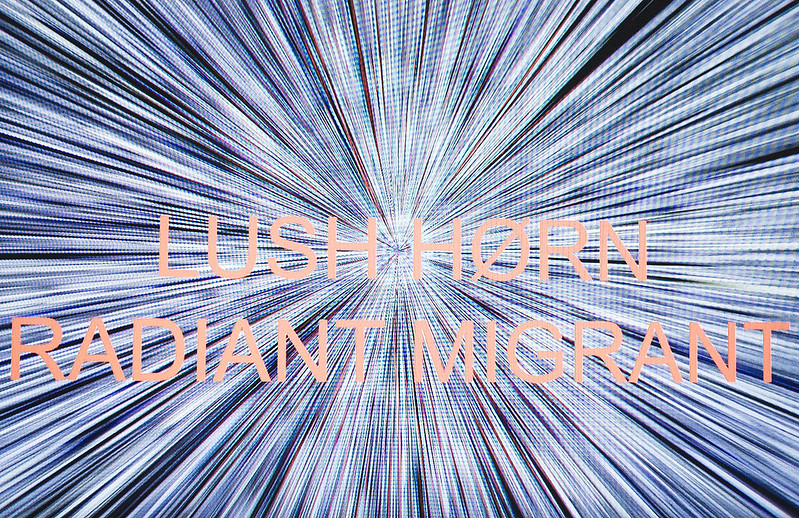
Lea Porsager, CØSMIC STRIKE, 2018. Photo by Caroline Lessire
What makes quantum physics so mind-boggling, however, is the way it mocks not only our trust in what we’ve always known about the world but also our capacity for imagination. Quantum physics tells you that a phenomenon can occur at the same time in two time-spaces. Or that the world we live in might very well be a vast hologram. A number of philosophical questions inevitably emerge from the new paradigms it brings about. Questions about the nature of reality, the importance of speculation in science, the limits to what humans can comprehend, etc.
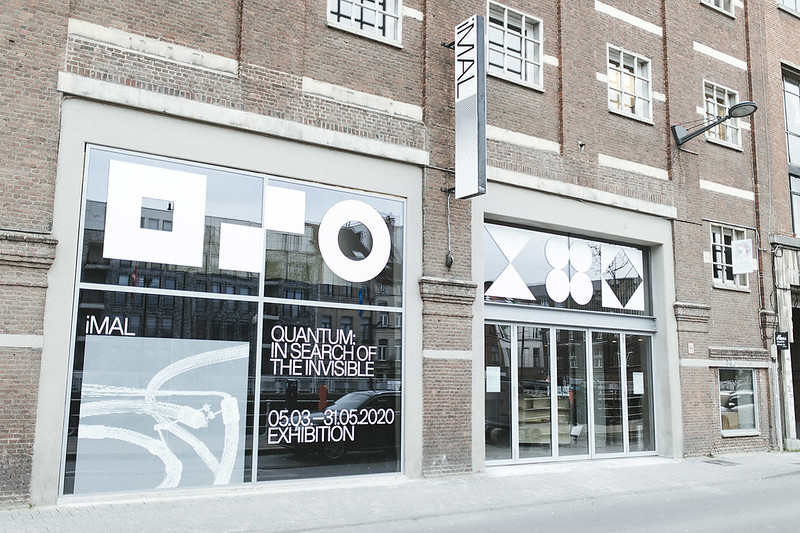
iMAL entrance on Quai des Charbonnages / Koolmijnenkaai in Brussels. Photo by Caroline Lessire
iMAL, the centre for digital cultures and technology in Brussels, has re-opened a couple of weeks ago with a spectacular art exhibition that explores the world of quantum physics. I’m sure you can guess the bad news: iMAL is closed until further notice. Keep an eye on their social media though, it is not only a space where creative minds from all over the world like to meet but also, because of its location in the infamous neighbourhood of Molenbeek, a cultural centre which programme will also address the inquisitiveness of local communities who tend to be left out of the cultural offers.
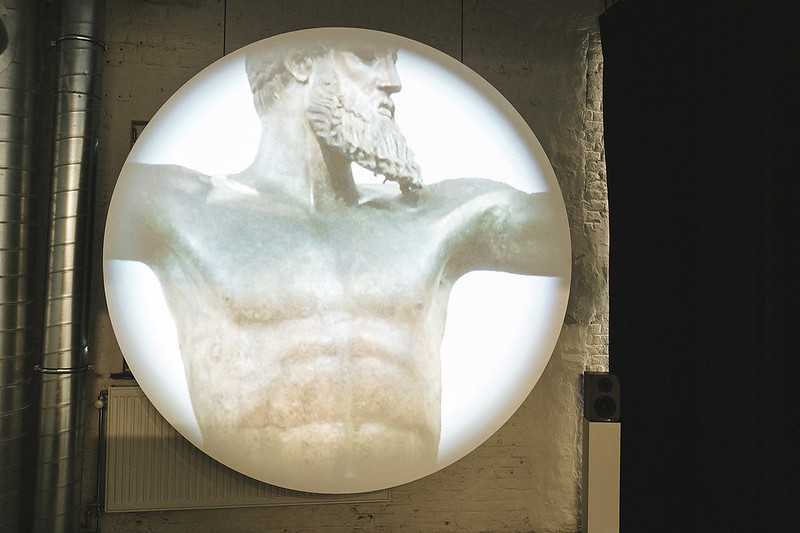
Suzanne Treister, The Holographic Universe Theory of Art History (THUTOAH), 2018. Photo by Caroline Lessire
I was lucky enough to be in Brussels for the opening weekend of Quantum: In Search of the Invisible. The international project, curated by Mónica Bello, Head of Arts at CERN, and José-Carlos Mariátegui, scientist, writer and curator, presents ten projects by artists who have spent time at CERN discussing with engineers and particle physicists.
The show is visually stunning. The installations and videos exhibited might be anchored in robust science but they are also able to speak to human imagination and sense of wonder. Here are some of my favourite:
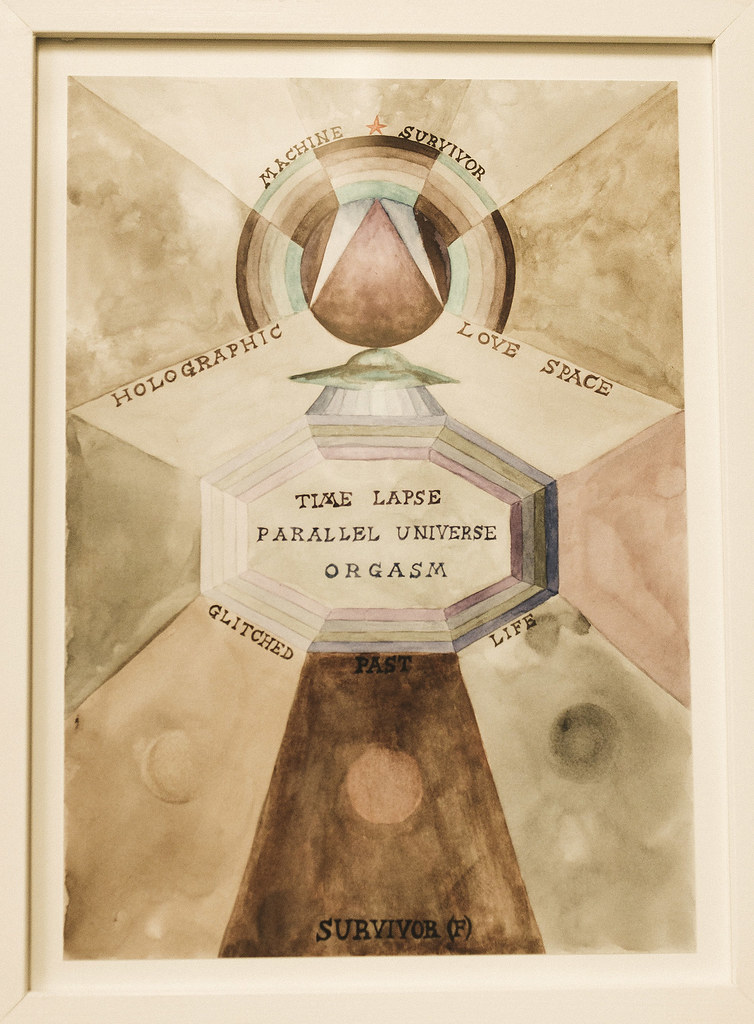
Suzanne Treister, The Holographic Universe Theory of Art History (THUTOAH), 2018. Photo by Caroline Lessire
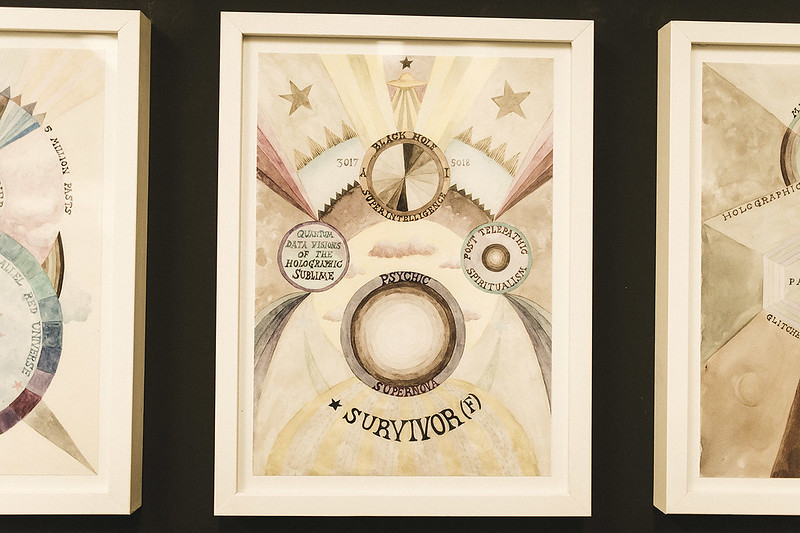
Suzanne Treister, The Holographic Universe Theory of Art History (THUTOAH), 2018. Photo by Caroline Lessire
No one in the world looks at technology the way Suzanne Treister does. At first sight, the way her work The Holographic Universe Theory of Art History (THUTOAH) approaches quantum physics is a bit puzzling and bizarre but it turns out to be grounded in genuine scientific debates. I had never heard of the holographic principle and the theory that our universe could be a vast, two-dimensional hologram.
Treister uses the theory to hypothesises that artists, every since they started painting in caves, may have been unconsciously attempting to describe the holographic nature of the universe.
The Holographic Universe Theory of Art History (THUTOAH) bombards our retinas with over 25,000 chronological images (25 per second) of works of art created by humanity. The video treats images like electrons and protons in a particle accelerator and plays with our brain’s capacity to process images. A series of watercolours and a soundtrack of interviews with CERN particle physicists accompany the video and further explain the holographic universe principle.
Diann Bauer, Scalar Oscillation, 2018

Diann Bauer (in collaboration with composer Seth Ayyaz), Scalar Oscillation, 2018. Photo by Caroline Lessire

Diann Bauer, Scalar Oscillation (in collaboration with composer Seth Ayyaz), 2018. Photo by Caroline Lessire
Time doesn’t really exist. A crash course by Carlo Rovelli
Time as it functions in physics is different from the temporality we experience. The reason why the distinction is important is that our most advanced systems operate on time scales that our human physiology can’t comprehend.
Through an hypnotising avalanche of text, graphics and sound, Scalar Oscillation overloads our senses and pushes our capacity to absorb and process information.
The script for Diann Bauer‘s video is partly based on physicist Carlo Rovelli’s book The Order of Time. The video makes the claim that even the most stable of objects, when observed from non-human scales are processes rather than things. It is science that defies our most basic human experience.
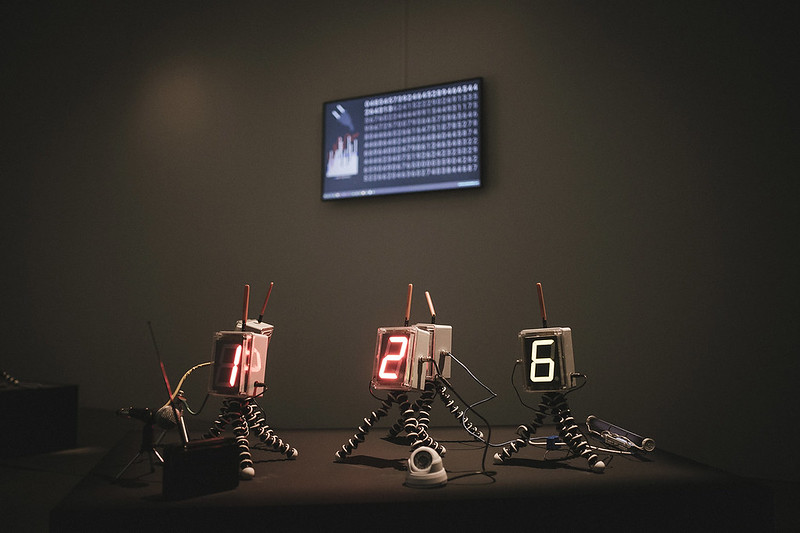
James Bridle, A State of Sin, 2018. Photo by Caroline Lessire
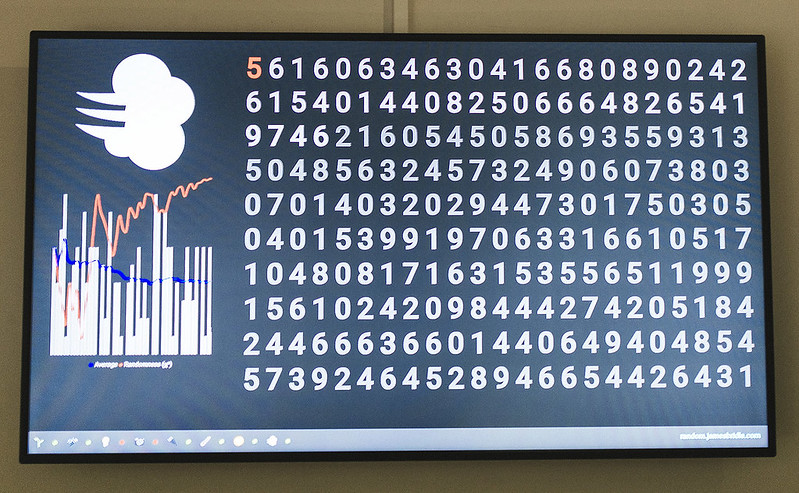
James Bridle, A State of Sin, 2018. Photo by Caroline Lessire
A State of Sin looks at mathematical randomness, a concept critical to many processes from gambling to cryptography. Randomness, however, cannot be computed, it must be acquired from the world. That’s exactly what the robots in the installation do.
The 8 random number generators on tripods look like little robots. Each of them uses a different sensor to sample randomness from the environment: level of moisture, sound, light, etc. They then generate random numbers from their reading. A nearby screen displays in real time the data captured.
The work cleverly demonstrates how much computational practices are dependent on the chaos of the world. Just like art. Just like the kind of creative thinking that underlies the work of engineers and particle physicists.
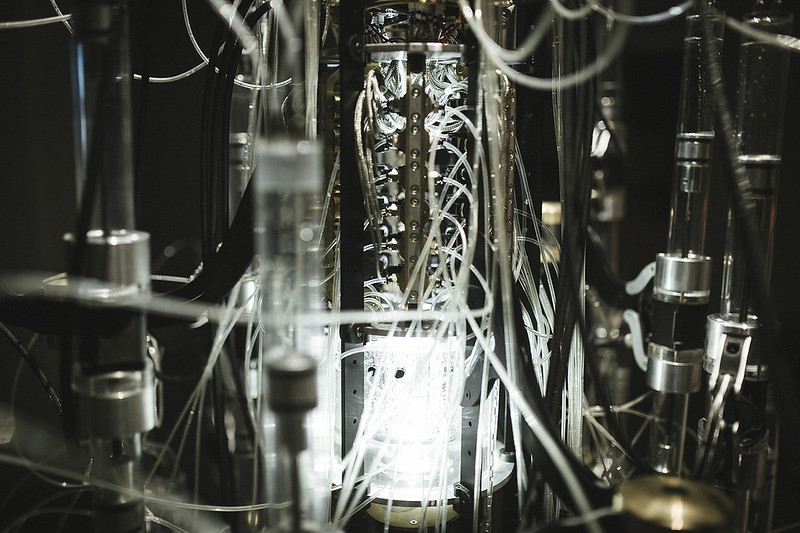
Yunchul Kim, Cascade, 2018. Photo by Caroline Lessire
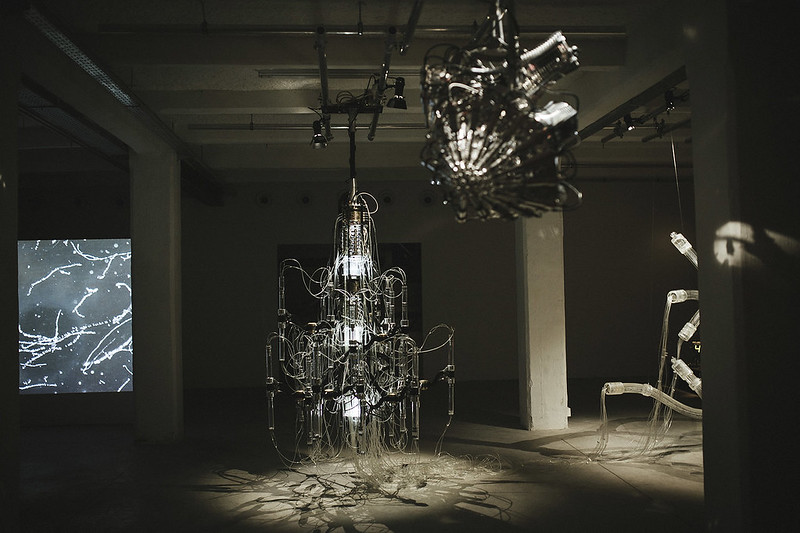
Yunchul Kim, Cascade, 2018. Photo by Caroline Lessire
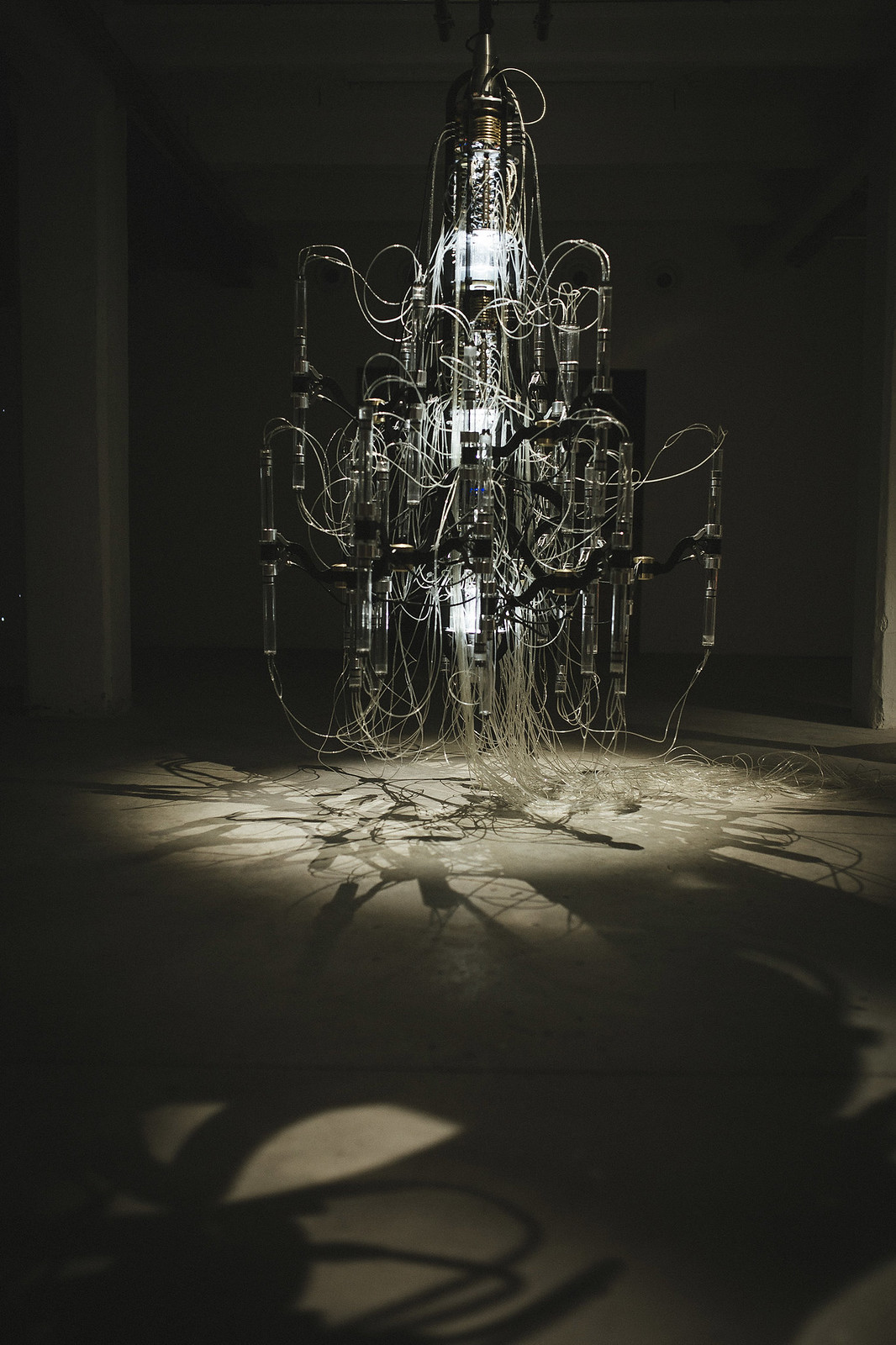
Yunchul Kim, Cascade, 2018. Photo by Caroline Lessire
Yunchul Kim very briefly describing Cascade, 2018
Cascade explores matter by capturing the pattern of muons. Muons are everywhere. These subatomic particles, much heavier than the electron, shower Earth from all angles and can pass through hundreds of metres of solid material before they are absorbed.
When muons are detected by Cascade’s handmade detector, a signal is sent to a chandelier-like structure, a light and connected pumps are activated and a fluid can be seen traveling through the transparent tubes of the sculpture, making sub-atomic activities visible. It’s slow, subtle and it requires a little bit of faith in what you think you’re seeing.
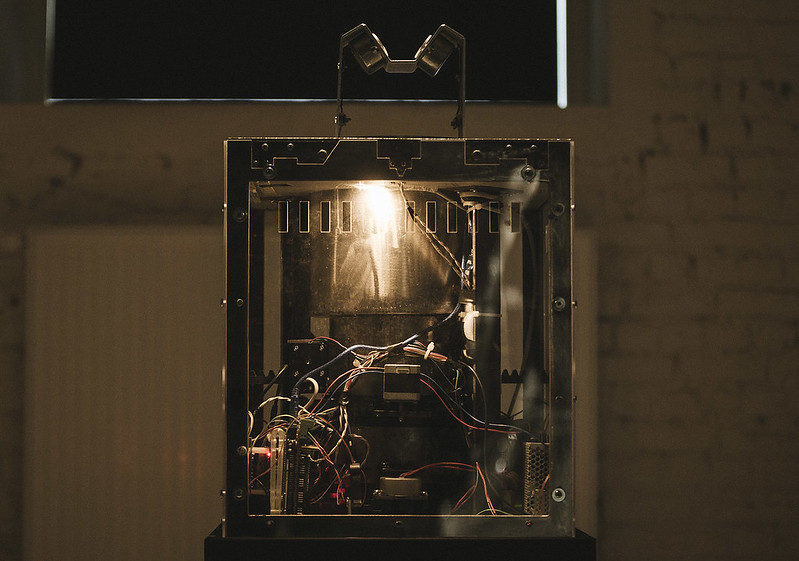
Juan Cortés, Supralunar, 2018. Photo by Caroline Lessire
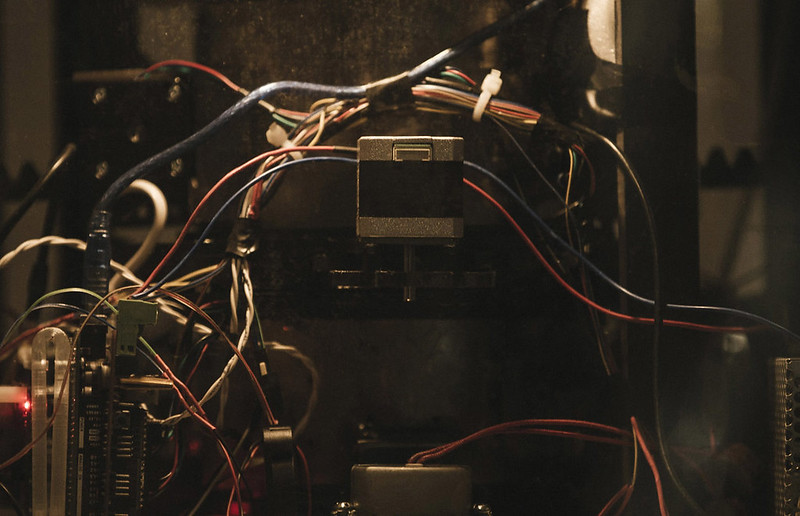
Juan Cortés, Supralunar, 2018. Photo by Caroline Lessire
Astronomer Vera Rubin changed the way we think of the universe by advancing that galaxies are mostly dark matter. Dark matter, a “material” that does not emit light nor energy, is thought to account for approximately 85% of all matter in the universe.
Supralunar consists of a series of electromechanical gears in motion that renders physiologically perceptible the patterns in astronomical data from which Rubin and other scientists have inferred the existence of dark matter.
More works and images from Quantum:
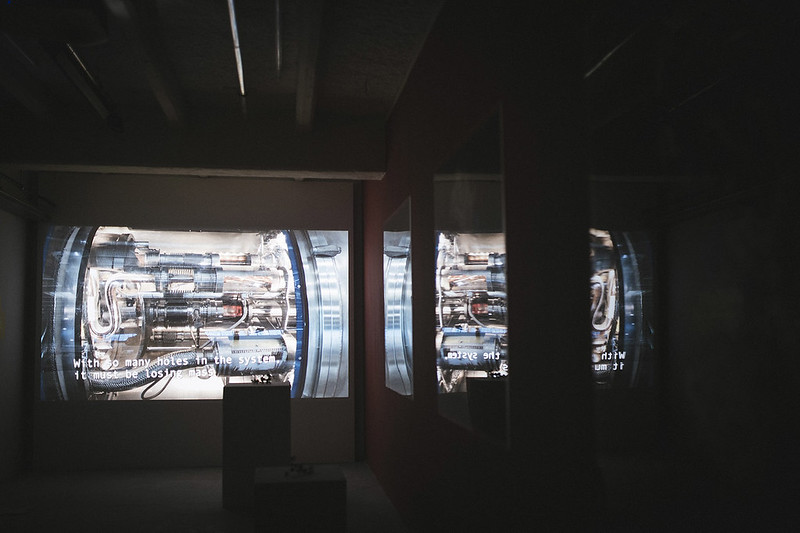
Julieta Aranda, Stealing One’s own Corpse (an alternative set of footholds for an ascent into the dark) – PART 3, 2018. Photo by Caroline Lessire
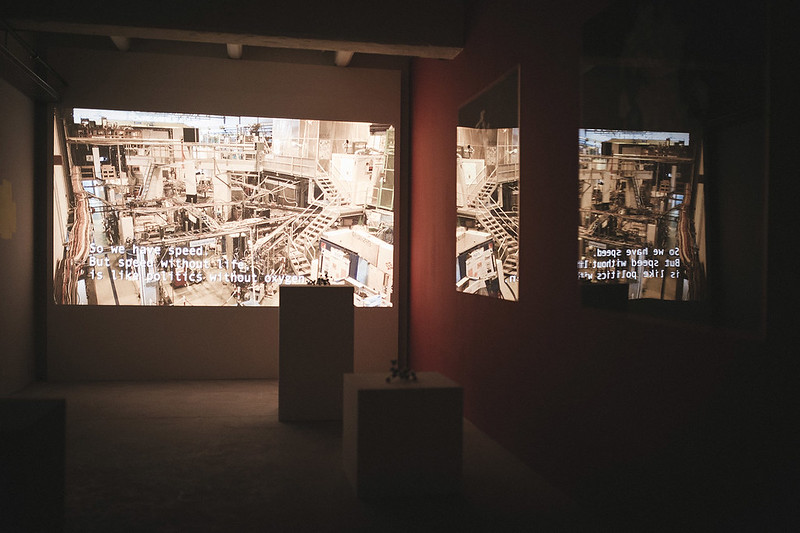
Julieta Aranda, Stealing One’s own Corpse (an alternative set of footholds for an ascent into the dark) – PART 3, 2018. Photo by Caroline Lessire
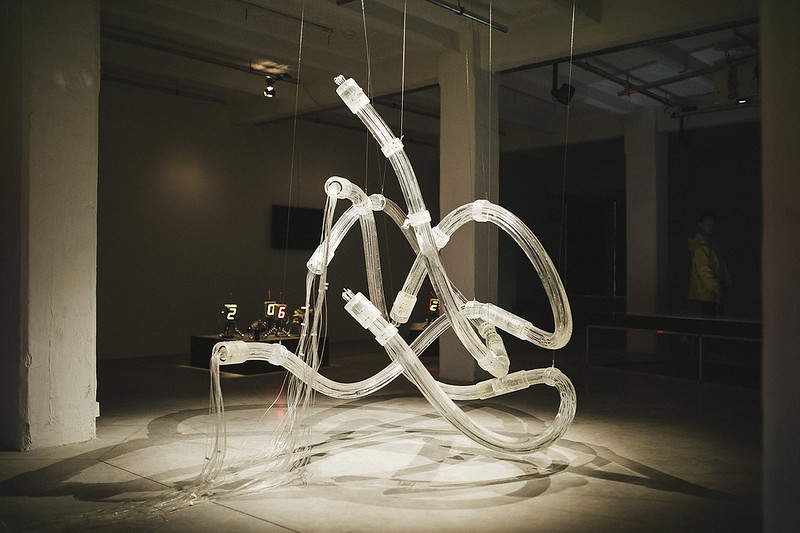
Exhibition view of Quantum: In Search of the Invisible. Photo by Caroline Lessire
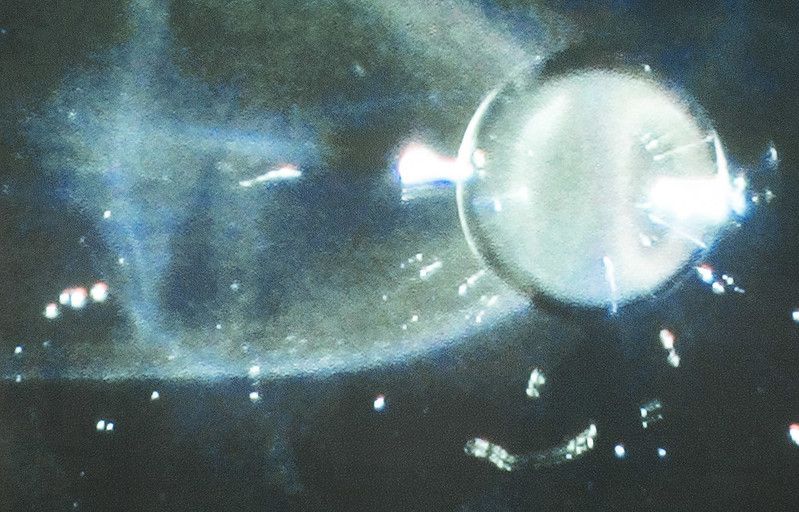
Evelina Domnitch & Dmitry Gelfand, Mucilaginous Omniverse, 2009. Performance during the opening weekend of Quantum: In Search of the Invisible. Photo by Caroline Lessire
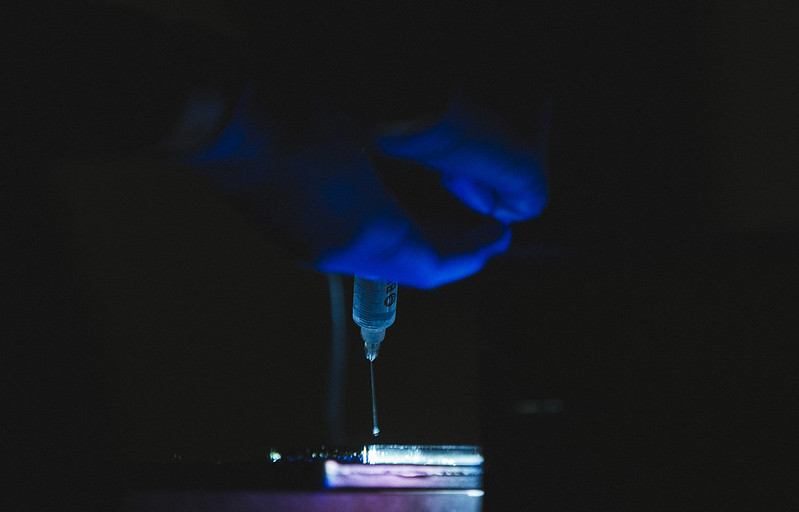
Evelina Domnitch & Dmitry Gelfand, Mucilaginous Omniverse, 2009. Performance during the opening weekend of Quantum: In Search of the Invisible. Photo by Caroline Lessire
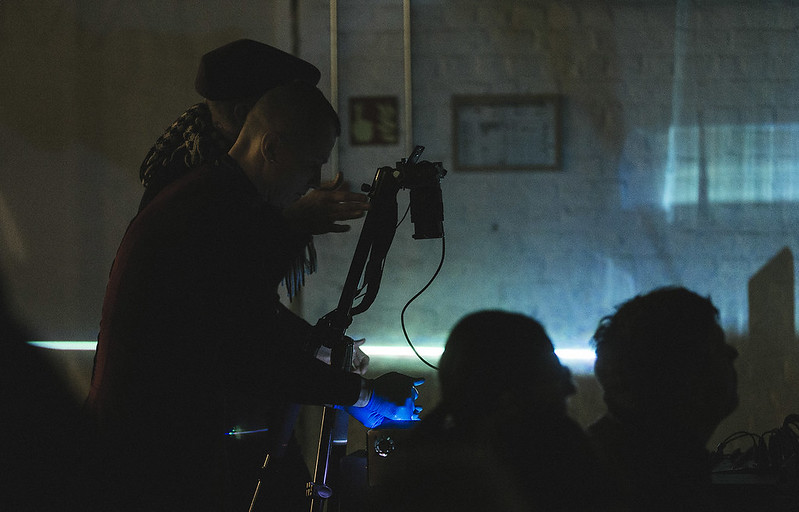
Evelina Domnitch & Dmitry Gelfand, Mucilaginous Omniverse, 2009. Performance during the opening weekend of Quantum: In Search of the Invisible. Photo by Caroline Lessire
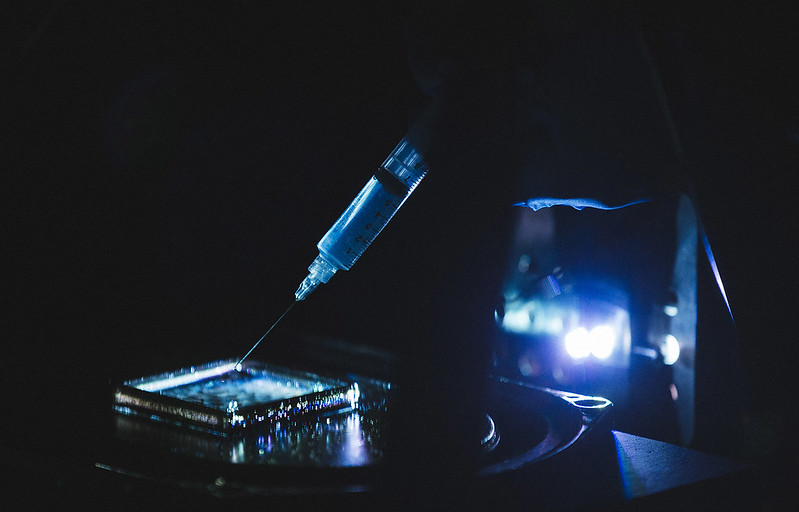
Evelina Domnitch & Dmitry Gelfand, Mucilaginous Omniverse, 2009. Performance during the opening weekend of Quantum: In Search of the Invisible. Photo by Caroline Lessire
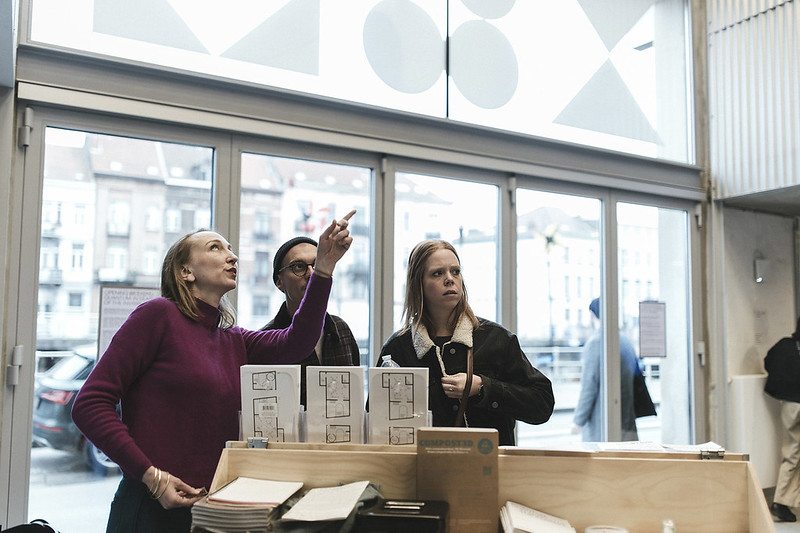
Inside iMAL. Photo by Caroline Lessire
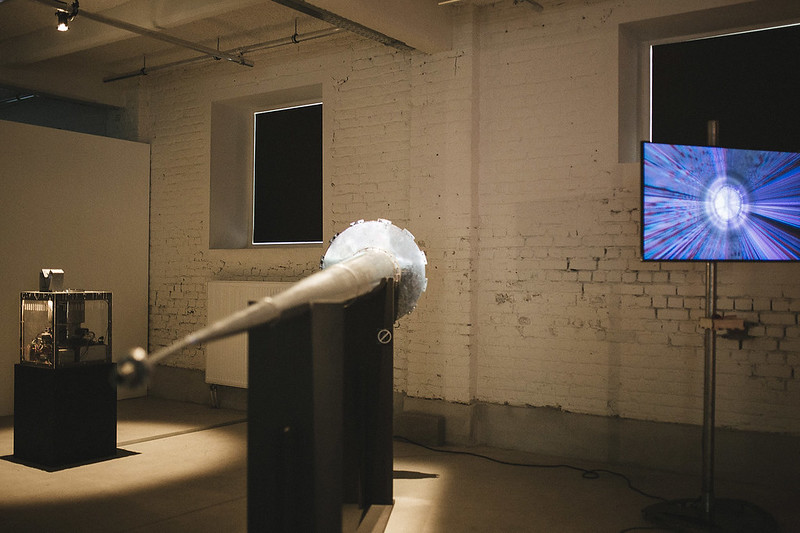
Exhibition view of Quantum: In Search of the Invisible. Photo by Caroline Lessire
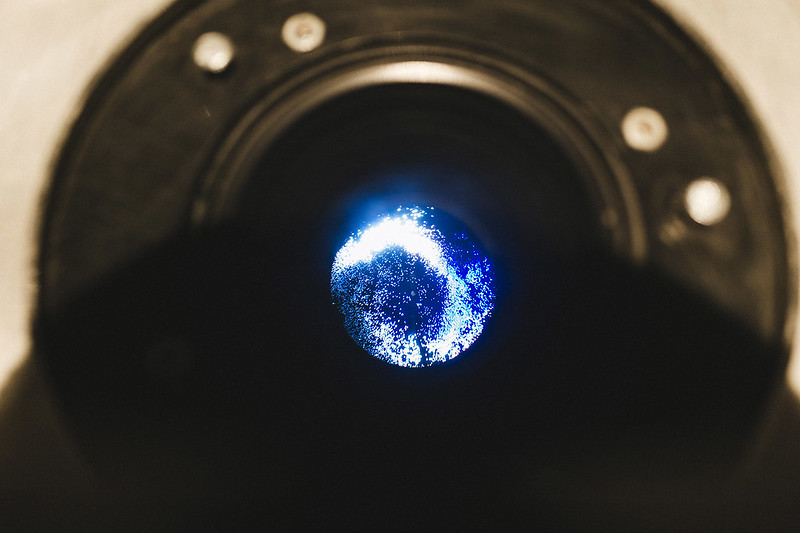
Exhibition view of Quantum: In Search of the Invisible. Photo by Caroline Lessire
Quantum: In Search of the Invisible, curated by Mónica Bello, Head of Arts at CERN, and José-Carlos Mariátegui, scientist, writer and curator, will hopefully reopen very soon at iMAL in Brussels.
